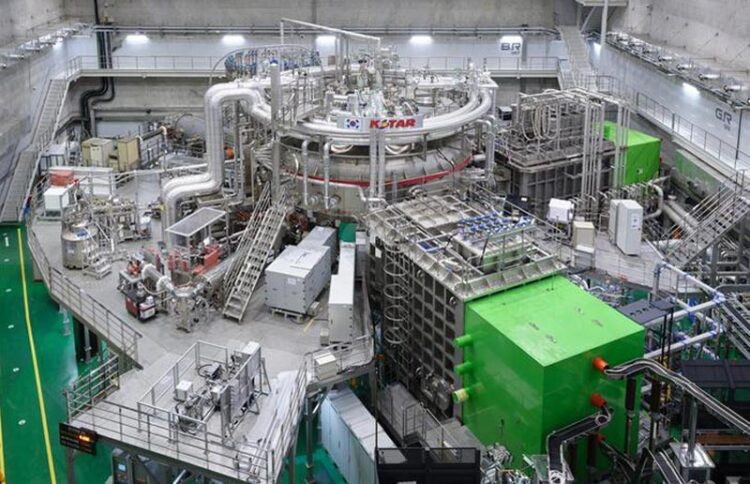The Korean artificial sun, KSTAR, has completed divertor upgrades, allowing it to operate for extended periods sustaining high-temperature plasma over the 100 million degrees.
The Korea Institute of Fusion Energy announced the successful installation of the newly developed tungsten divertor for KSTAR. KSTAR, now equipped with the new divertor, commenced a plasma experiment on the 21st of December 2023.
The divertor, a crucial plasma-facing component installed at the bottom of the vacuum vessel in a magnetic fusion device known as a Tokamak, manages the exhaust of waste gas and impurities from the reactor and also endures the highest surface heat loads. This is why it is important to develop and deploy a divertor that is highly heat-resistant.
Initially, KSTAR had a carbon divertor, but for KSTAR’s enhanced performance and prolonged operations at 100 million ℃, the heat flux exceeded the limit of the carbon divertor.
Consequently, the development of a divertor using tunsten has begun in 2018. The first prototype was completed in 2021, and installation of a new divertor took place from September 2022 for approximately one year. The recently installed divertor consists of 64 cassettes, each crafted from tungsten mono-blocks. These 64 cassettes fully surround the bottom of the vacuum vessel.
Tungsten material possesses a high melting point and low sputtering characteristics. Therefore, the heat flux limit has improved by over two-fold compared to the carbon divertor, reaching 10 MW/m².
The plasma experiments of KSTAR in the new tungsten divertor environment will continue until February 2024. The primary objectives include verifying stable operations in the new tungsten divertor environment and reproducing KSTAR’s 100-million-degree plasma.
KFE President, Dr. Suk Jae Yoo stated, “In KSTAR, we have implemented a divertor with tungsten material which is also the choice made in ITER. We will strive to contribute our best efforts in obtaining the necessary data for ITER through KSTAR experiments.”
Previously, KSTAR has demonstrated high performance plasma operation for 30 seconds with an ion temperatures over 100 million degrees, and now the goal is to achieve 300 seconds by the end of 2026 with this new divertor.
The Korea Institute of Fusion Energy(KFE) is Korea’s only research institute specializing in nuclear fusion. Based on our development and operation of KSTAR, a superconducting fusion research device, the KFE seeks to achieve groundbreaking research results, develop core technology for commercializing nuclear fusion, and train outstanding nuclear fusion personnel. In addition, the institute is spearheading a joint effort to open the era of nuclear fusion energy in the mid-21st century through active participation in the ITER Project.
The Korean artificial sun, KSTAR, has completed divertor upgrades, allowing it to operate for extended periods sustaining high-temperature plasma over the 100 million degrees.







